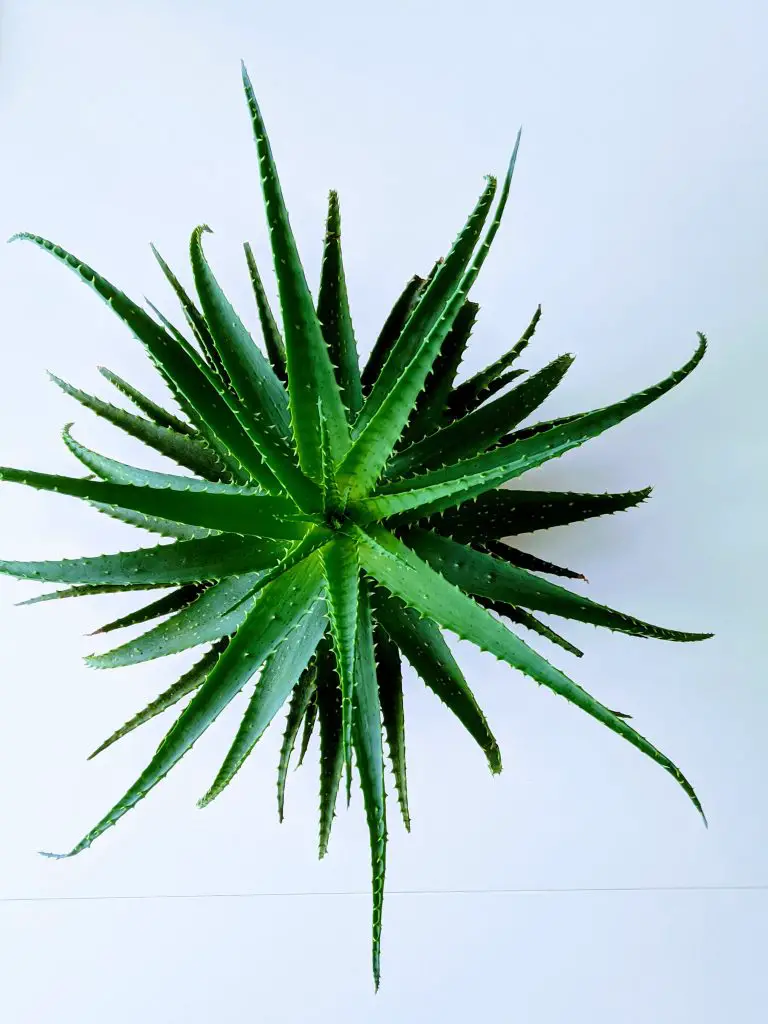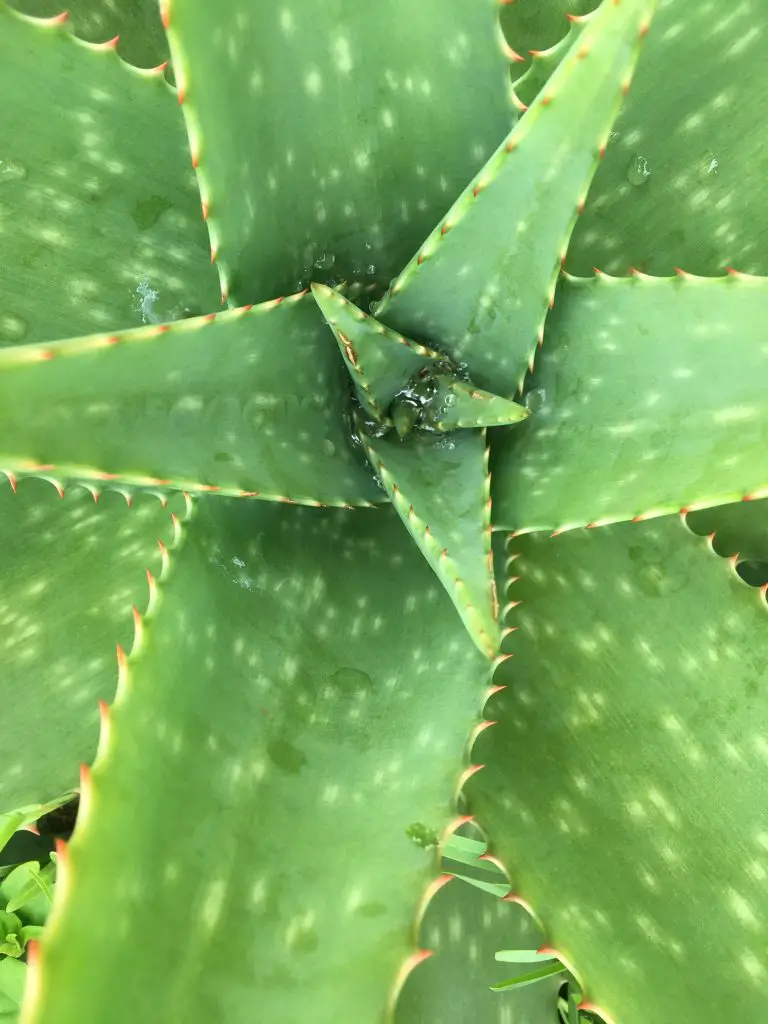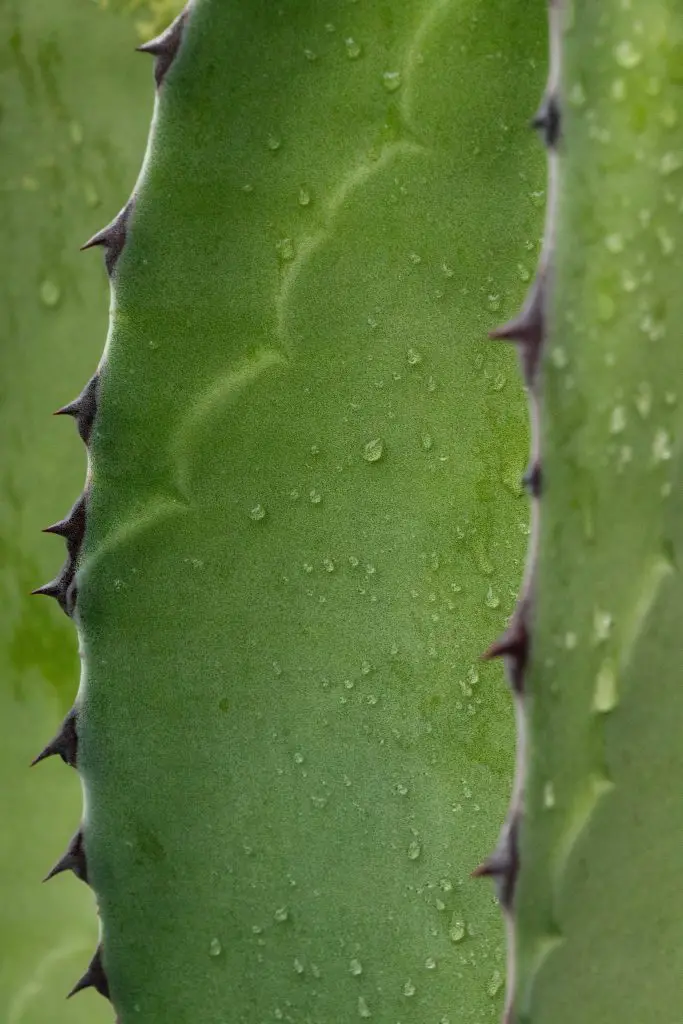What Is The Difference Between Cactus And Aloe Vera? Aloe Vera is one of the most well-known plants in the world, it is used to produce gels that are suited for treating sunburns. It also appears as an ingredient in numerous other skincare products. But what type of plant is it? A succulent or a cactus? Or something else entirely?
Cactus is a family of plants that contains many different species where Aloe Vera is the name of one specific species from a separate family. Aloe Vera features thick leaves that have spines on the edges of the leaves that are capable of storing water whereas the plants within the cactus family do not have leaves and instead store water in their stems.
These stems are often covered in spines that have evolved largely as a defense mechanism to discourage animals from eating the plant which would be highly prized in a desert environment as a source of water.
The presence of leaves on the Aloe Vera plant also leads to a distinctly different shape compared to the cacti. When looking from above the plant has a star-like configuration whereas the cacti are often a simple dome or an upright stem. An example of an aloe vera plant is shown in the image below.

About Aloe Vera
Aloe vera is a plant that originated on the Arabian Peninsula and is a succulent plant but not a cactus. The term succulent refers to any plant that has thickened stems or leaves that are used for water storage. However, as Aloe vera has thickened leaves that are not present in members of the cacti it is not classified in that family.
It is just one of 500 species that are in the Aloe genus which appears all over the world. The plant itself is an evergreen perennial shrub that grows in a wide range of different climates from arid to tropical and semi-tropical locations. It is grown for commercial purposes and is well known for being used skin lotion and gel to treat sunburn.
It is a relatively short plant that typically reaches 25 to 40 inches (50 to 100cm). The leaves originate from a central point and are symmetrical in nature. They are usually greyish or green in color with a serrated edge that contains small sharp spines. The plants will produce flower spikes that are approximately 35 inches with yellow tubular flowers.
Growing Aloe Vera
Aloe vera, like other succulents, requires relatively dry conditions to perform at its best. When planting aloe vera into the ground or a container it is important to ensure that the soil has excellent drainage. If you are planning to plant into a garden it may be necessary to improve the drainage soil either by adding sand, horticultural grit, or perlite. Alternatively, the plant can be mounded up to create additional drainage or planted on a sloping site to avoid water pooling around the roots of the plant.
When planting in containers it is advisable to use an especially formulated cactus potting mix that has excellent drainage. If you are going to use a regular potting mix it needs to be modified with perlite or sand to improve drainage. Additionally. it is important to ensure that the container has plenty of drainage holes and is not sitting directly on the ground as this has the potential to block the holes.
In terms of light Aloe vera plants require a sunny location that gets at least 6 to 8 hours of sun. If the plant is growing indoors it is best the choose a southerly or westerly location to maximize the sunlight that the plant receives.
When watering the plants it is important to water deeply but infrequently which will mimic their natural habitat. Between waterings, the soil should be allowed to go completely dry. In terms of fertilization, the plant generally does not need any additional nutrients and is quite used to impoverished soils.
To propagate the Aloe vera is relatively easy and can be done either by leaf cuttings or division. To propagate by leaf cuttings remove a section of a healthy-looking leaf that is approximately 4 inches in length. Place the plant into cactus potting mix at a depth of around 1 inch.

In the initial stages that cutting is in the ground it will require a little more water than usual to ensure that the plant develops roots. The best way to do this is to mist the plant with water every second day or so until you begin to see growth. At the stage the amount of water can be reduced to a normal level.
Leaf cuttings will typically take anywhere between 3 and 5 months to fully develop roots before the plant can be planted out in the garden.
A quicker way to establish the plant is by division. Once the parent plant has reached a few years old it will start to produce “pups” or little baby plants on the side of the main plant. These pups can be used to propagate the plant relatively quickly because they already have a root system.
The pups on the mother plant are often hiding at the base of the mother plant and are obscured by the large leaves of the mother plant. These pups need to reach the point that they have developed at least a few leaves of their own before they are ready to be divided as this is an indication that it has its own root system.
At this stage the pups can be removed from the soil, the easiest way to do this is to use a trowel to loosen the soil around the pups to avoid damaging the roots. The plants have be placed in separate pots to allow the plant to become established. As the plant already has a root system the watering regime of the plant needs to be the same as the parent plant.
The plant will typically take 2 to 3 months to start to show strong growth at this stage it can be planted out into the garden.

About Cacti
The plant family Cactaceae, or the cactus family is made up of approximately 1750 different species which are divided up into 127 different genera. With so many species, the Cactus comes in a wide range of different forms but all have evolved in habitats where water is scarce. The vast majority of species are native to the Americas.
As a result of that water scarcity Cacti have developed many adaptations that are designed to conserve water. The most apparent of these adaptions is that they have developed fleshy areas that are designed to store water. However, as mentioned above this only occurs in the stem of the plant which is a defining feature of cacti.
These stems are designed to maximize water storage capacity while minimizing the surface area of the plant which reduces water loss. A common feature of the Cactus stems is that they are often ribbed which allows them to increase in size. This provides an opportunity for the plants to hold greater volumes of water when it is available.
Another adaption is the presence of spines which helps prevent water loss by reducing air flow near the cactus. These spines appear from a structure called areoles that is unique to cactus plants and also the point at which flowers are produced.
In terms of size Cactus vary enormously depending up the species of the plant. There are species that range from 0.5 inches up to 60ft (20m) tall. Some of these larger species are known to be able to absorb much as 200 U.S. gallons (760 L) during a single rainstorm.
